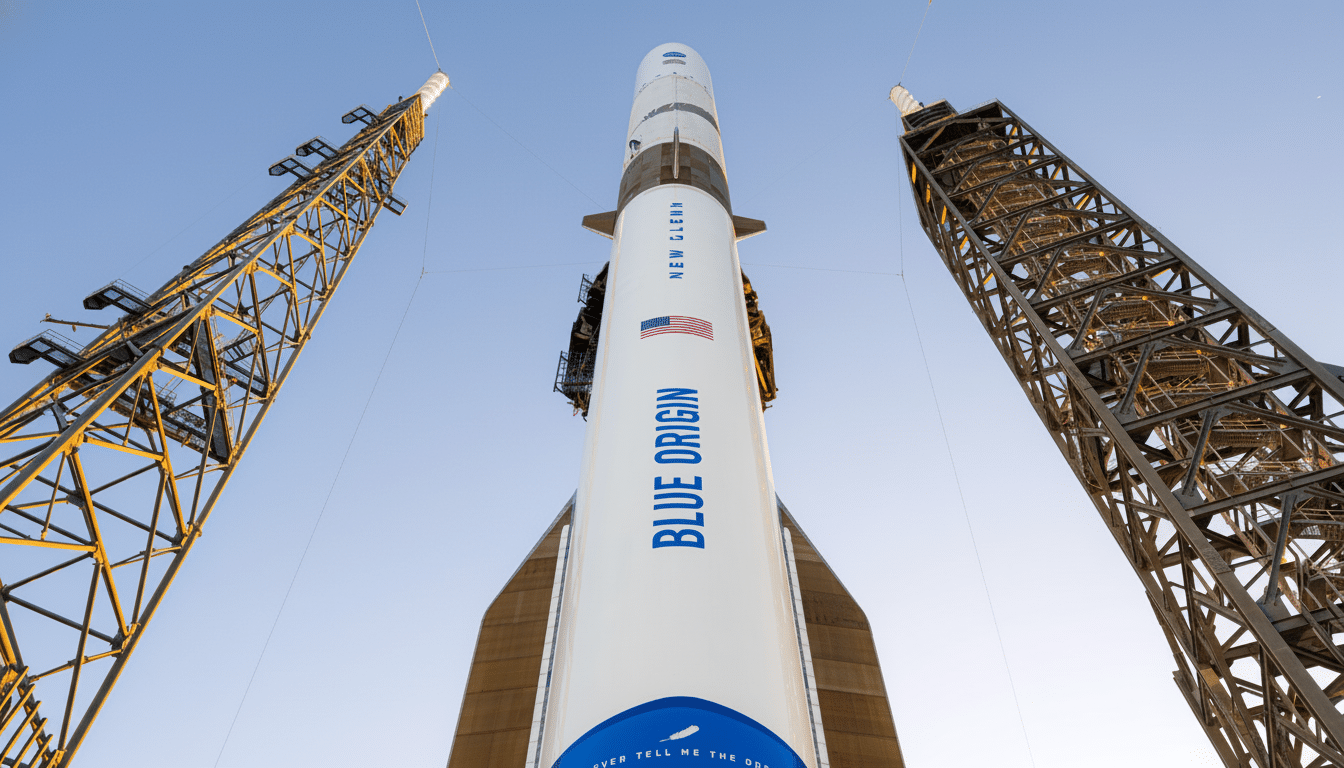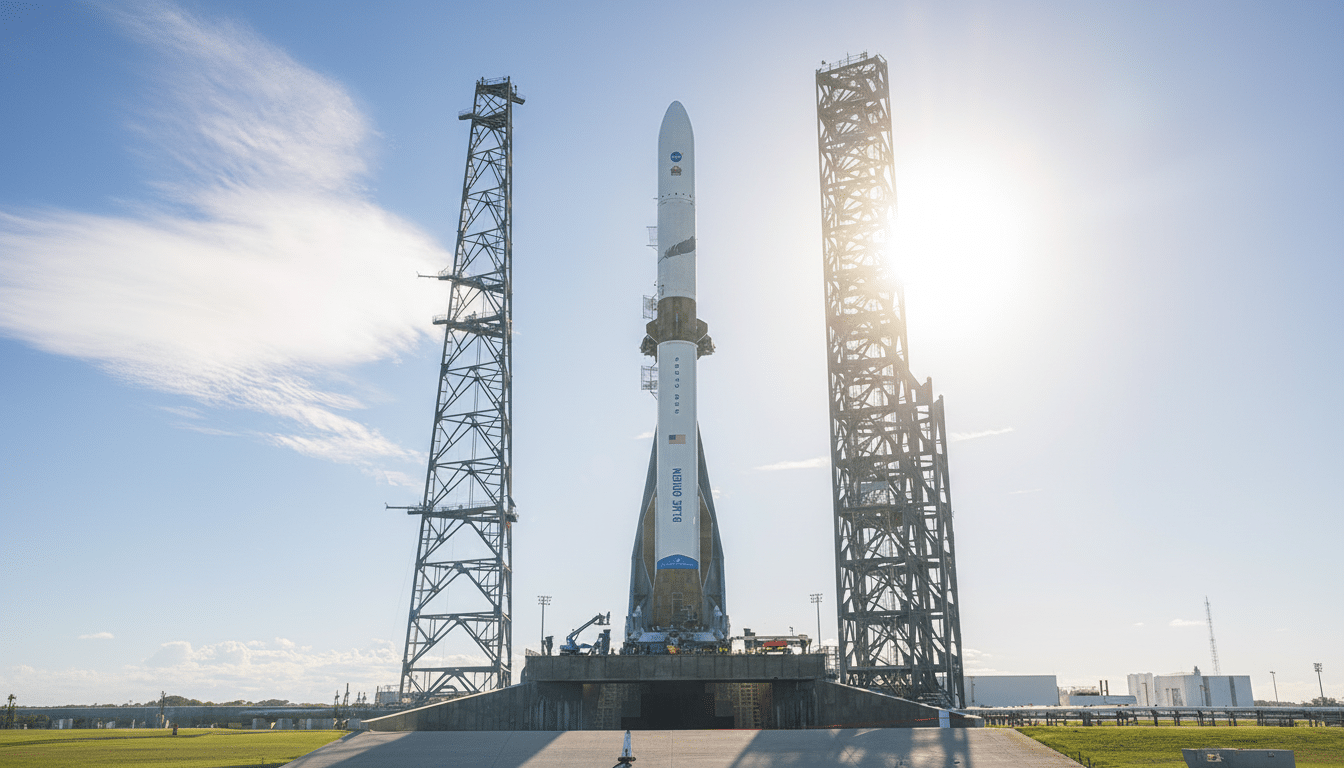Blue Origin nailed its first booster landing for the New Glenn on an ocean platform, and in the same flight dispatched two NASA spacecraft toward Mars — a pivot-point moment for the company’s long-delayed heavy-lifter rocket and a kairotic one for reusability.
The two-stage vehicle, which blasted off from Launch Complex 36 at Cape Canaveral in Florida, saw its 189-foot first stage return to Earth about 10 minutes later and land on a drone ship floating in the Atlantic. About half an hour after liftoff, the upper stage set NASA’s twin spacecraft loose, starting a three-month probe to determine how the Martian atmosphere changes over time.

Why It Matters That The New Glenn Will Land
Landing an orbital-class booster at sea is a club of which there has until now been exactly one member. By signing up for it, Blue Origin indicates that New Glenn can play in the realm that revised launch economics: reusing hardware on multiple flights. The rocket is powered by seven methane-fueled BE-4 engines and comes with a gigantic 7-meter-diameter (23-foot) first stage that is designed for reflight; the current objective has been to refly individual boosters up to 25 times.
If reusability is no longer just a party trick, it forms the underpinnings of price, cadence and reliability. The FAA’s commercial space reports and Aerospace Corporation analyses have continually connected fast booster turnaround with lower marginal costs and more frequent access to orbit. If Blue Origin can make the leap from single recovery to routine reuse, it adds another option for heavy payloads headed for LEO, GTO and cislunar space.
Inside the NASA payload carried by Blue Origin’s New Glenn
The pair of spacecraft are also part of NASA’s ESCAPADE mission, which was designed in conjunction with the University of California, Berkeley’s Space Sciences Laboratory. Attached to each small satellite are magnetometers and plasma instruments that will map the way solar wind strips particles from Mars’ upper atmosphere — data that may help improve models of atmospheric escape and long-term climate change on the Red Planet.
Two near-identical probes launched into complementary orbits can make simultaneous measurements single-satellite missions can’t. The mission’s low mass and tight timing compatibility with New Glenn’s performance margin — enough energy to spare for the interplanetary trajectory while saving, for recovery, a landing option for the booster.

From anomaly to Atlantic landing: how New Glenn rebounded
New Glenn’s first flight this year resulted in the loss of the booster, which failed to land. After a thorough review with the FAA regarding this anomaly, Blue Origin updated its hardware and software, pushing forward further acceptance testing of the root cause correction on both the Propulsion System and GN&C stack targets. The second mission also faced schedule headwinds — including coastal storms and elevated solar activity that narrowed the window for range safety constraints — before achieving a clean ascent, separation and recovery.
Second-stage recoveries for new heavy-lift vehicles have been relatively rare. In successfully sticking the landing on try two, Blue Origin shortened some of what would be a learning curve over many missions and allowed it to set a baseline for repeating descent, entry and landing profiles.
Competitive landscape and what’s next for New Glenn
SpaceX established a new benchmark, with hundreds of Falcon 9 landings and reflights shaking up the global launch market. Air Force launches accounted for the six other missions and industry totals compiled by the Federal Aviation Administration and Euroconsult show that the company leads in terms of annual launch cadence around the world. Blue Origin’s move doesn’t erase that lead, but it provides a credible alternative for the large satellites, deep-space probes and cislunar cargo that high demand or tight schedules have pushed into slower-running segments of capacity and production.
The proving ground has moved beyond that stage to rapid reuse. Blue Origin will also have to tow the stage back to port, drain and safe it, inspect engines and structures, and prove a rapid refurbishment cycle. Engine throughput is a factor, too: BE-4s are used on both New Glenn and ULA’s Vulcan, so establishing high rates of production is critical to flight rate. That bodes, he continued in his own email to Ars Technica, “looks pretty good for you and your NASA payload.” (If Blue Origin can re-fly this booster and maintain a relatively high flight tempo/op tempo, it will strengthen its argument for NASA science payloads, Artemis logistics support missions, and national security launches under the procurement programs of the Space Force.)
For NASA, a dependable New Glenn contributes resiliency to a launch ecosystem that has been wrestling with heavy-payload demand. Today’s landing and successful delivery to altitude of the payload help turn New Glenn from a much-hyped concept into actual hardware that can be used for infrastructure — one step closer, as the company’s slogan name-checks, to getting “millions of people living and working in space.”

